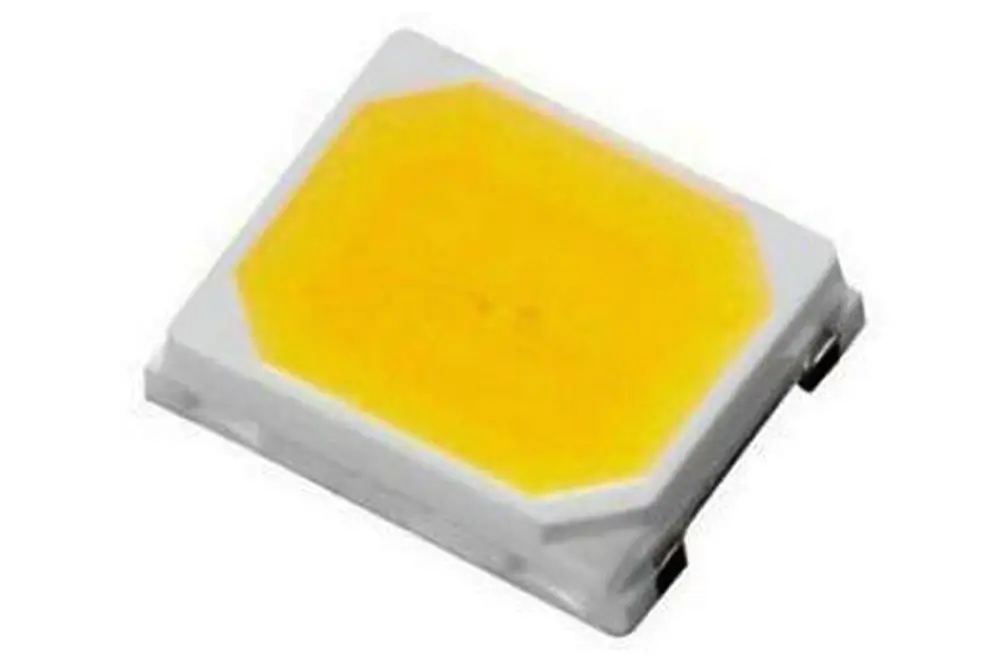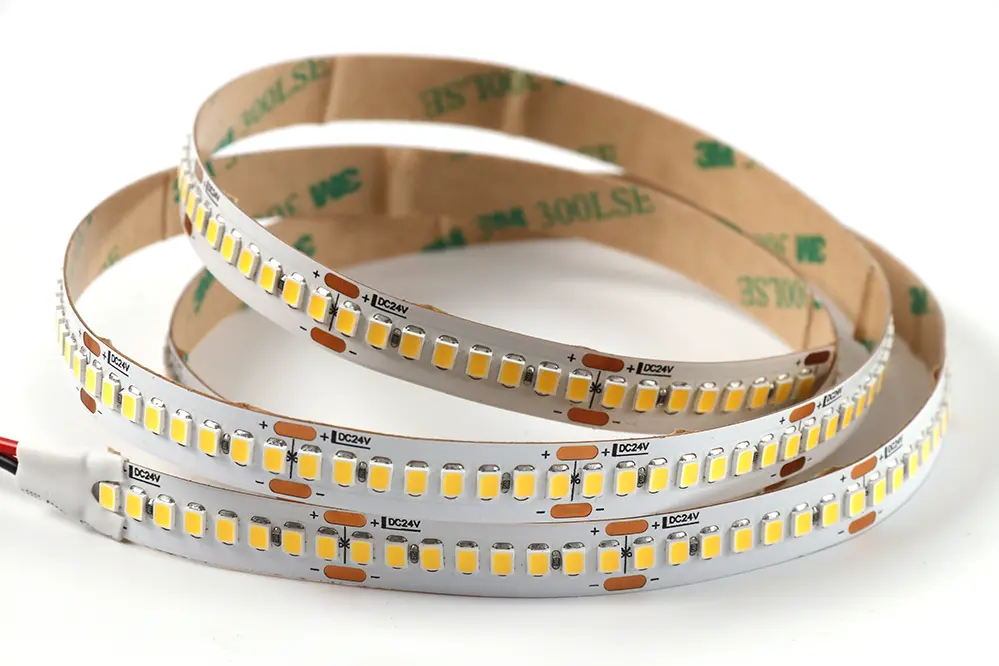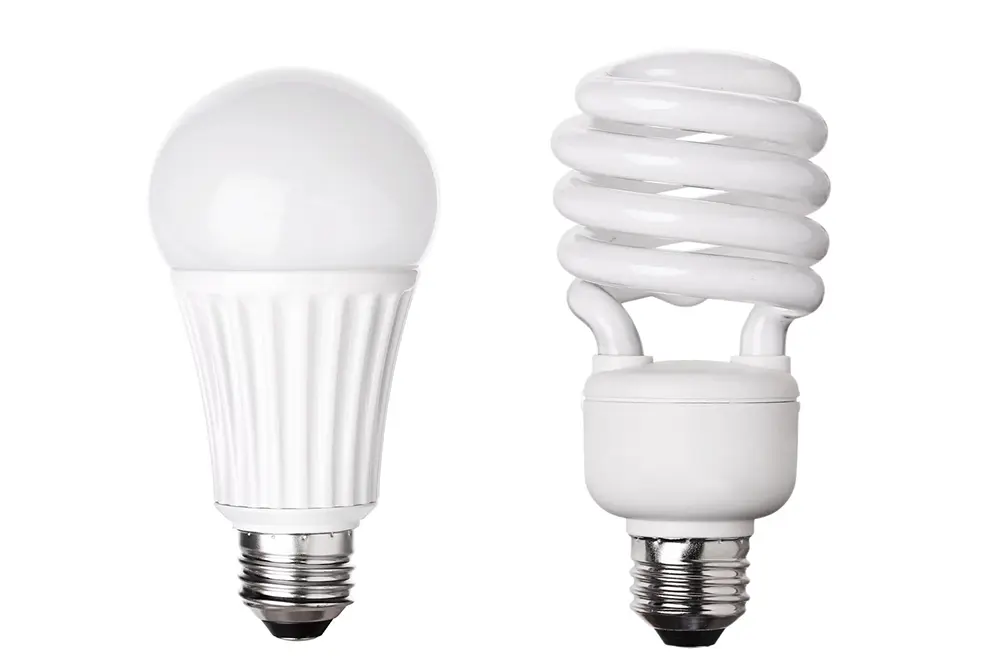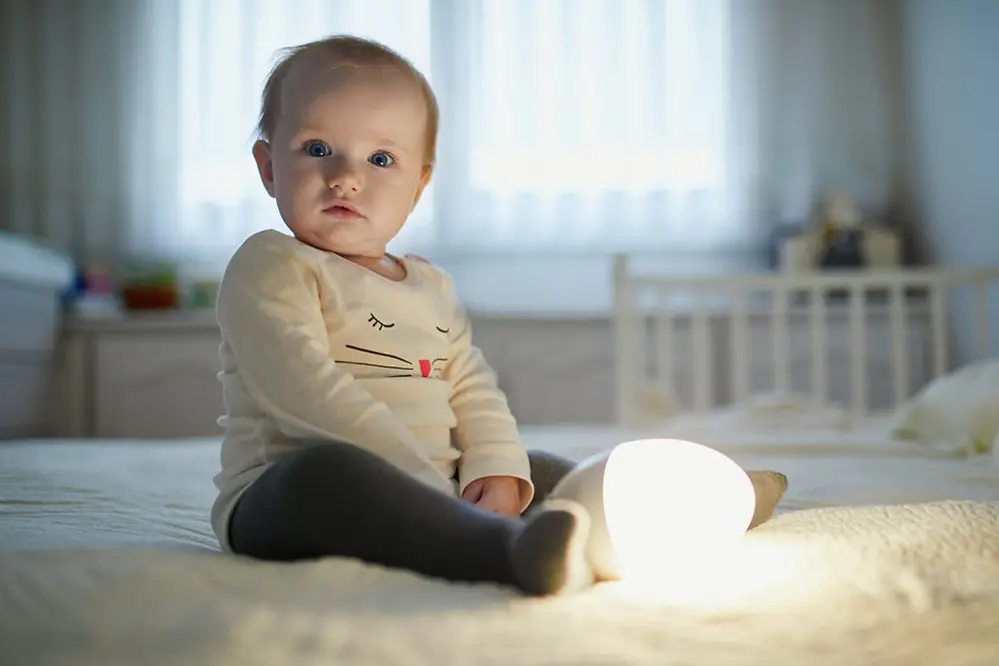Potential Risks: Are LED Strip Lights Bad for Babies?
- 2024-05-10 12:22
- UNITOP
Welcome to our blog post on the potential risks of LED strip lights for babies. If you're a concerned parent or caregiver, you've come to the right place. We understand that the safety of your little ones is of utmost importance, and we're here to provide you with expert insights and information on this topic.
LED strip lights are a popular lighting choice for their energy efficiency and versatility. However, when it comes to babies, it's essential to consider potential risks. While LED strip lights themselves are not inherently bad for babies, certain factors need to be taken into account. In this blog post, we'll explore these factors, including the impact of blue light, heat generation, and installation precautions, to help you make informed decisions about using LED strip lights in your baby's environment.
Whether you're planning to use LED strip lights in your baby's nursery or simply curious about their potential effects, we have a wealth of information to share. In the following sections, we'll delve deeper into the specific risks associated with LED strip lights and provide practical tips to ensure the safety and well-being of your little ones. So, let's dive in and shed light on this important topic together.
Understanding LED Light Basics

LED, or Light Emitting Diode, technology represents a significant advancement in energy-efficient lighting. Unlike incandescent bulbs, LEDs generate light via a semiconductor that emits photons when an electric current passes through it. This process, known as electroluminescence, converts electricity into light with remarkable efficiency and produces minimal heat, making LEDs an increasingly popular choice for various applications, including nursery lighting.
To appreciate the implications of LED lighting on infants, one must consider the spectral quality and intensity of the light emitted. LEDs can emit light across a broad spectrum and are often designed to mimic natural light. However, the blue light peak, inherent in most white LEDs, is a point of consideration due to the potential impact on sleep patterns and eye health. Judicious selection of LED lighting with appropriate color temperature and intensity suited for a nursery is therefore vital in mitigating any potential risks.
What Makes Up LED Strip Lights

LED strip lights embody a fusion of modern illumination and versatile design. They consist of numerous small LEDs mounted on a flexible circuit board, enabling them to bend and twist around various surfaces. This pliability grants designers and homeowners the liberty to create both functional and aesthetic lighting displays in an array of settings.
Fundamental to their operation is a reliable power source and an often adhesive backing, allowing for easy installation. Typically grouped together at consistent intervals, the LEDs on the strip are encased in a silicone cover to guard against physical damage and exposure to moisture, enhancing durability.
LED strip lights can efficiently disperse light with little heat, exemplifying safe lighting solutions.
To control these strips, users may utilize dimmers, color-changing controls, or even smart home integration. These features provide dynamic control over the intensity and color of the light emitted, tailoring the ambiance to the desired setting. Furthermore, LED strips can be cut to size and extended, showcasing remarkable adaptability for varied installation needs.
LED Lights vs. Traditional Lighting

LED technology outshines traditional lighting options.
Compared to incandescent or fluorescent lamps, LEDs demonstrate superior energy efficiency, longevity, and safety. Their ability to convert more power into visible light results in less wasted energy as heat, which not only reduces the cost of operation but also minimizes the risks associated with high temperatures. Additionally, the solid-state nature of LEDs contributes to their resilience and reduces maintenance concerns.
Traditional light sources can't match LED adaptability.
In spatial flexibility and lighting control, LED solutions - particularly LED light strips - hold distinct advantages. Their compact form factor permits installation in locations otherwise inaccessible to conventional bulbs. Moreover, their capacity to adapt color temperature and brightness instantaneously aligns with the evolving demands of modern lighting design.
LEDs have a significantly lower carbon footprint.
Their ecological impact is an area where LED lighting markedly distinguishes itself. By demanding less energy for comparable illumination, LEDs contribute to a reduction in power plant emissions, thereby lessening environmental harm. The strides made in LED technology since 2023 further ensure that contemporary lighting solutions uphold environmentally conscientious standards alongside aesthetic and functional excellence.
LED Lights and Infant Exposure

In the realm of infant safety, particular scrutiny is given to any potential environmental hazards, including the omnipresent nature of artificial lighting.
When considering light-emitting diode (LED) technology, specifically strip lights applied within proximity to infants, one must attend to variables such as brightness intensity, flicker rate, and color temperature. These factors, when modulated correctly, aim to mitigate any potential adverse effects on a baby's developing vision and circadian rhythms.
Ultimately, the "child-friendly" designation of LED lights hinges on compliance with established safety standards and prudent usage within children's environments.
Potential Risks of LED Light
While LED lights offer numerous advantages, they present potential risks when not used judiciously.
- Photochemical Risk: Overexposure to intense LED light can pose a photochemical risk to the retina.
- Circadian Disruption: Disruption of circadian rhythms due to inappropriate color temperatures and lighting schedules.
- Flicker Sensitivity: Sensitivity to the flicker of LEDs can cause visual discomfort or other adverse reactions (although largely mitigated in modern LEDs).
- Chemical Component Exposure: Potential exposure to harmful substances present in some LED lights, such as lead or arsenic, although typically in very low quantities.
Assessing these risks necessitates a nuanced understanding of LED technology.
Appropriate implementation and regulation of LED lighting can effectively minimize these risks, especially in environments frequented by infants.
Duration and Intensity Factors
The impact of LED lights on infants significantly correlates with the duration and intensity of exposure.
- Duration of Exposure: Prolonged periods under intense LED lighting increase the potential risks to infants' health and development.
- Intensity of the Light: High-intensity LED lighting can be more detrimental than softer, diffused lighting when considering retinal safety and circadian rhythm disruption.
- Dimming Capabilities: Utilizing LEDs with dimming capabilities allows for the adjustment of light intensity to safer levels, particularly during evening hours.
- Indirect versus Direct Lighting: Positioning LED lights to bounce off ceilings and walls mitigates direct exposure, enhancing visual comfort and safety for infants.
- Color Temperature: Cooler color temperatures (blue-enriched light) are more disruptive to circadian rhythms; warmer tones are advisable for settings with infants.
Proper management of light conditions is essential to mitigate potential health hazards.
By adhering to prescribed guidelines, the photobiological safety of LED lighting can be maintained for infant environments.
LED Safety Certifications
When selecting LED strip lights for environments inhabited by infants, attention must be paid to safety certifications that indicate compliance with established standards. Certifications such as UL (Underwriters Laboratories) and ETL (Intertek Testing Services) signal that the products have undergone rigorous testing to ensure they do not pose electrical or fire risks.
In addition to general safety certifications, attention to photobiological safety standards like IEC 62471 is crucial. These standards pertain to the potential optical radiation hazards that come with LED usage. Products certified to meet these criteria help ensure that luminaires, including LED strip lights, do not pose risks of photochemical retinal injury or other forms of light-induced harm to vulnerable infants.
Industry Standards for LEDs
Industry standards for LEDs ensure product quality, performance, and safety for consumer peace of mind. These benchmarks rigorously scrutinize various aspects of LED technology.
These standards cover photometric performance, lifetime, and electrical safety.
Standards such as ANSI/IES LM-79-19 provide procedures for measuring LED products' electrical and photometric properties, ensuring consistency across different lighting products. Mechanisms such as these are part of an extensive framework designed to provide reliable, high-performance lighting solutions that are safe for all users, including infants.
As part of a comprehensive safety and performance protocol, specific standards address the blue light hazard, color stability, and flicker in LED lighting. For example, IEEE 1789-2015 provides recommendations for reducing flicker, which can be particularly important in preventing potential negative effects on infant visual development. Through judicious application of these standards, the industry mitigates risks and establishes best practices for LED installation and usage in sensitive environments.
Significance of Certifications for Baby Safety
Certifications offer assurance that LED strip lights meet rigorous safety standards essential for infants.
- UL Certification ensures electrical safety and fire hazards are addressed.
- RoHS Compliance verifies the absence of harmful substances like lead and mercury.
- FCC Marking indicates minimized electromagnetic interference, which is vital near infants.
- IES Standards guide the prevention of optical hazards, including intense blue light exposure.
- IEEE Standards provide benchmarks for flicker rates, safeguarding against potential discomfort or visual issues.
These accreditations signify a commitment to the well-being of babies through thorough safety evaluations.
Persistent adherence to certified lighting solutions not only bolsters safety but also advances the industry's reputation for reliability and trustworthiness.
Mitigating Harmful Effects
To assuage potential concerns, selecting LED strip lights with a low Correlated Color Temperature (CCT), ideally 2700K to 3000K, can offer a warm, soothing glow. This practice aligns with IES Standards to minimize intense blue light, which is crucial in fostering a tranquil environment conducive to an infant's sleep patterns and eye comfort. Proceed with prudent installation, positioning lights where direct exposure to the baby’s eyes is unlikely, thereby circumventing undue optical stimulation.
Employing a dimmer control is another prudent strategy, providing the ability to adjust luminosity to optimal levels, conducive to both safe nighttime feedings and serene slumber. Gradual dimming capabilities mimic natural sunset patterns, supporting the infant's circadian rhythm. In parallel, ensuring that the IEEE Standards are met regarding flicker rates is critical, as a stable light output is imperative for preventing visual disturbances that can lead to discomfort or developmental issues in young children.
Choosing the Right LED Strips
When considering lighting options for babies, it's crucial to prioritize safety and comfort. Select LED strip lights that are free of toxins and heavy metals, adhering to stringent certification standards like RoHS to ensure they do not emit harmful substances.
In addition, scrutinize the light output's Color Rendering Index (CRI), opting for a high CRI value which reflects natural color fidelity. High-quality LED strips with a CRI of 90 or more will render colors accurately, providing a stimulating atmosphere that supports visual development without introducing color distortion - a key factor in establishing a visually enriching environment.
Furthermore, attention must be given to the electromagnetic interference (EMI) emitted. Choose LED strips with low EMI signatures to safeguard infants from potential electromagnetic exposure. While the impact of EMI on health requires further conclusive studies, erring on the side of caution is advisable, especially where infants are concerned.
Lastly, opt for LED strip lights with a controllable intensity range far beyond mere on and off states. The ability to finely tune brightness accommodates various activities and times, from vibrant play sessions to tranquil bedtime preparation. This aspect, twinned with measures ensuring indirect light placement, establishes an adaptable lit environment that can grow with the child, offering visual comfort for years to come.
Best Practices for LED Usage
Prioritize color rendering index (CRI) when selecting LEDs.
A higher CRI correlates to a more accurate color rendering, which is crucial not only for aesthetic purposes but also for maintaining a consistent and soothing environment for infants. LEDs with a CRI above 90 are highly recommended, as they offer colors that are close to natural light, reducing strain on a baby's developing eyesight. Furthermore, ensuring that the selected LED strips are free from excessive blue light emissions helps preserve infants' circadian rhythms, contributing to healthier sleep patterns.
Install LEDs with dimming capabilities for adjustable intensity.
Controllability is vital when it comes to LED lighting in spaces occupied by infants. LEDs with dimming functions allow for the customization of light levels, adapting to the requirements of different times of day or activities. This practice not only enhances the versatility of the lighting system but also minimizes the risk of overstimulation, offering a serene ambiance conducive to an infant's rest and relaxation.
Minimize direct exposure to LED light sources.
Indirect lighting should be the guiding principle in the placement of LED strips in infants' areas. By diffusing light, you reduce glare and create a more uniform light distribution, which is less taxing on the eyes and more consistent with natural lighting conditions. Also, ensure that LED fixtures and strips are securely mounted out of reach—not only for safety reasons but to mitigate any direct exposure to the bright light sources.
Consider smart lighting options for enhanced flexibility.
The integration of smart lighting technologies affords an additional level of control and convenience. With features like scheduling, remote operation, and integration with other smart home systems, parents can effortlessly adjust lighting scenarios to suit their infant's needs throughout the day. Ensuring that used smart devices comply with recognised safety standards is a key consideration for secure operation within the child's environment.
Stay informed about the latest advancements in LED technology.
Advancements in LED technology are continuously enhancing light quality and safety. Keeping abreast of the latest research and product developments helps ensure that the lighting choices you make are aligned with the newest insights and standards. Utilize reputable sources when seeking information, and consider products that hold certifications, which denote adherence to established safety and performance benchmarks.
Conclusion
When considering LED strip lights for nurseries, prioritize safety and comfort. Choose LEDs with a warm color temperature, avoid excessive brightness, and ensure proper installation. Follow manufacturer instructions and use dimmer controls for added safety. LED lighting technology is a safe choice for nurseries when implemented wisely. It enhances sensory experience without compromising well-being. However, be vigilant when using lighting for extended periods, such as nightlights. Maintain fixtures, replace defective units promptly, and handle power sources with caution. Stay updated on safety recommendations and prioritize infant well-being. Select products carefully and monitor usage patterns to ensure LED strip lights pose no threat to babies.
If you're looking for high-quality LED strip lights and LED neon strips, we recommend reaching out to Unitop, a professional Chinese manufacturer known for their expertise and reliable products. With their wide range of options and commitment to safety, Unitop can provide you with the perfect lighting solution for your baby's space. Contact Unitop today to explore their offerings and ensure a safe and beautiful nursery for your little bundle of joy.
